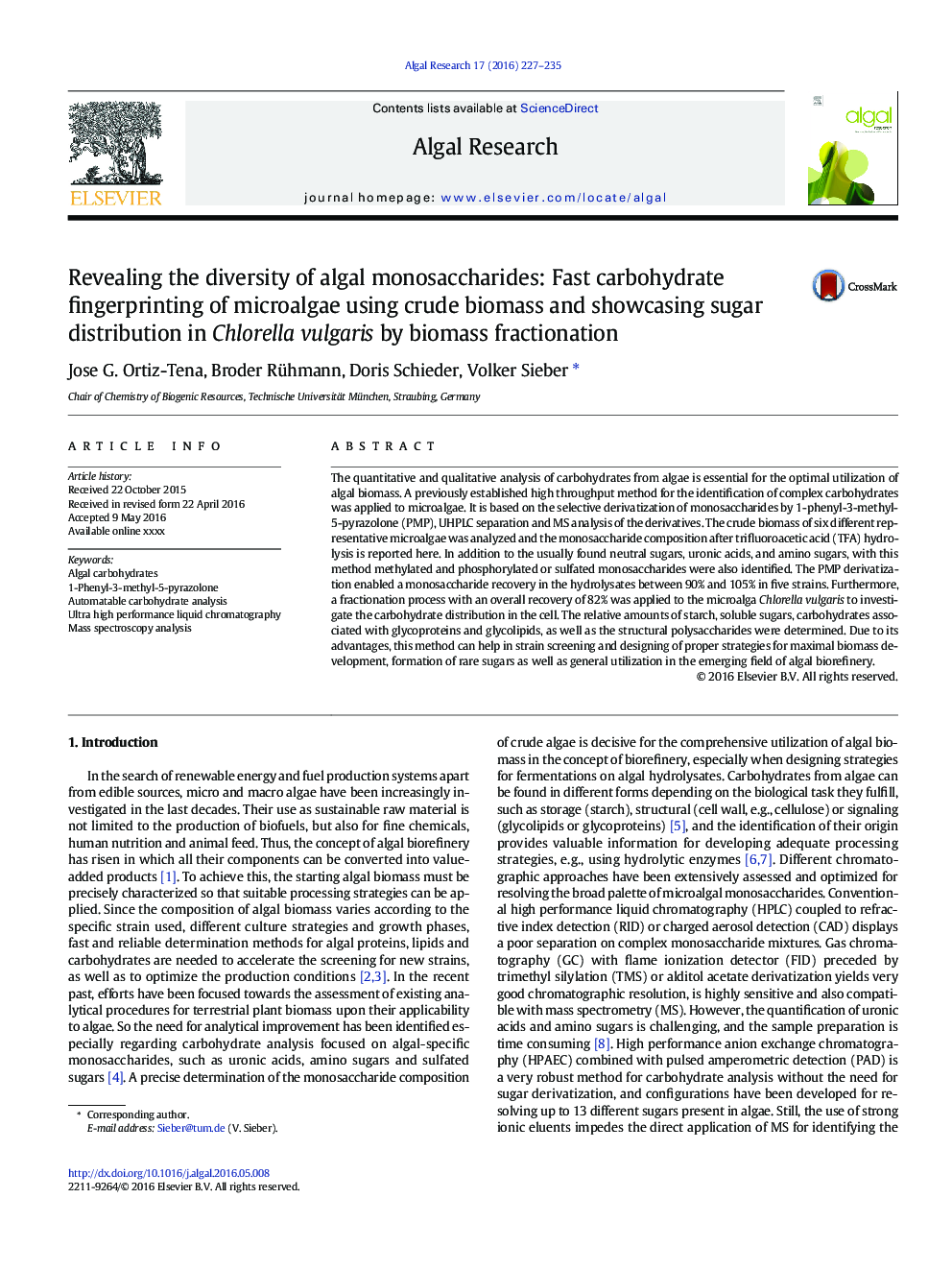| Article ID | Journal | Published Year | Pages | File Type |
|---|---|---|---|---|
| 8086930 | Algal Research | 2016 | 9 Pages |
Abstract
The quantitative and qualitative analysis of carbohydrates from algae is essential for the optimal utilization of algal biomass. A previously established high throughput method for the identification of complex carbohydrates was applied to microalgae. It is based on the selective derivatization of monosaccharides by 1-phenyl-3-methyl-5-pyrazolone (PMP), UHPLC separation and MS analysis of the derivatives. The crude biomass of six different representative microalgae was analyzed and the monosaccharide composition after trifluoroacetic acid (TFA) hydrolysis is reported here. In addition to the usually found neutral sugars, uronic acids, and amino sugars, with this method methylated and phosphorylated or sulfated monosaccharides were also identified. The PMP derivatization enabled a monosaccharide recovery in the hydrolysates between 90% and 105% in five strains. Furthermore, a fractionation process with an overall recovery of 82% was applied to the microalga Chlorella vulgaris to investigate the carbohydrate distribution in the cell. The relative amounts of starch, soluble sugars, carbohydrates associated with glycoproteins and glycolipids, as well as the structural polysaccharides were determined. Due to its advantages, this method can help in strain screening and designing of proper strategies for maximal biomass development, formation of rare sugars as well as general utilization in the emerging field of algal biorefinery.
Related Topics
Physical Sciences and Engineering
Energy
Renewable Energy, Sustainability and the Environment
Authors
Jose G. Ortiz-Tena, Broder Rühmann, Doris Schieder, Volker Sieber,
